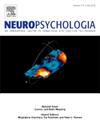Anodal tDCS over right posterior parietal cortex reduces inter-vehicle distance variability: A driving simulator study
IF 2
3区 心理学
Q3 BEHAVIORAL SCIENCES
引用次数: 0
Abstract
Driving is a complex task requiring the integration of multiple cognitive functions and coordinated neural activity. Prior studies suggest that anodal transcranial direct current stimulation (tDCS) over the right dorsolateral prefrontal cortex (DLPFC) can enhance driving performance, likely due to the DLPFC's role in executive functions. In addition to the DLPFC, the posterior parietal cortex (PPC)—involved in integrating sensory, cognitive, and motor signals—may also contribute to driving behavior. This study investigated the effects of anodal tDCS over the DLPFC and PPC on simulated driving performance. Participants completed a follow-the-lead-car task before and after stimulation, with performance measured using brake reaction time and its standard deviation, standard deviation of lateral position, percentage of speed limit violations, inter-vehicle distance, and the variability (i.e., root mean square) of inter-vehicle distance. We hypothesized that stimulation of either region would improve driving behavior. Results showed that anodal tDCS over the PPC significantly reduced the variability of inter-vehicle distance, suggesting enhanced driving stability. This effect likely reflects the PPC's involvement in spatial attention and motor integration—key processes for maintaining stable following distance. No significant improvements were observed in other performance metrics or following DLPFC stimulation. Overall, this is the first brain stimulation study that connects PPC with driving behavior, and highlights the potential of PPC as a neuromodulatory target to improve driving performance.
右侧后顶叶皮层的阳极tDCS减少了车辆间距离的可变性:一项驾驶模拟器研究。
驾驶是一项复杂的任务,需要多种认知功能的整合和协调的神经活动。先前的研究表明,通过右背外侧前额叶皮层(DLPFC)的阳极经颅直流电刺激(tDCS)可以提高驾驶性能,可能是由于DLPFC在执行功能中的作用。除了DLPFC,后顶叶皮质(PPC)——参与感觉、认知和运动信号的整合——也可能对驾驶行为有影响。本研究探讨了阳极tDCS对DLPFC和PPC对模拟驾驶性能的影响。参与者在刺激前和刺激后分别完成了一项跟车任务,并通过制动反应时间及其标准差、横向位置标准差、超速违例百分比、车间距离和车间距离变异性(即均方根)来衡量他们的表现。我们假设刺激任何一个区域都会改善驾驶行为。结果表明,与PPC相比,阳极tDCS显著降低了车际距离的可变性,提高了驾驶稳定性。这种效应可能反映了PPC参与空间注意力和运动整合——保持稳定跟随距离的关键过程。在DLPFC刺激后,其他性能指标没有明显改善。总的来说,这是第一个将PPC与驾驶行为联系起来的脑刺激研究,并强调了PPC作为提高驾驶表现的神经调节靶点的潜力。
本文章由计算机程序翻译,如有差异,请以英文原文为准。
求助全文
约1分钟内获得全文
求助全文
来源期刊

Neuropsychologia
医学-行为科学
CiteScore
5.10
自引率
3.80%
发文量
228
审稿时长
4 months
期刊介绍:
Neuropsychologia is an international interdisciplinary journal devoted to experimental and theoretical contributions that advance understanding of human cognition and behavior from a neuroscience perspective. The journal will consider for publication studies that link brain function with cognitive processes, including attention and awareness, action and motor control, executive functions and cognitive control, memory, language, and emotion and social cognition.
 求助内容:
求助内容: 应助结果提醒方式:
应助结果提醒方式:


